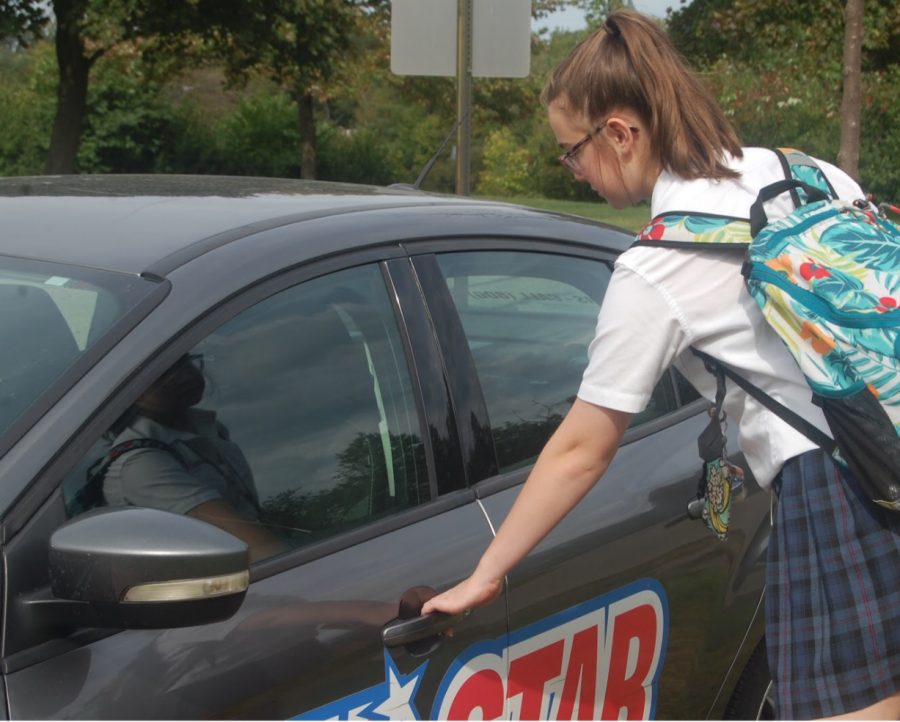Learning in segments
In the nineties, 16-year-olds were able to acquire a license after passing one test. Now, teens must go through two segments in order to drive alone and wait until they’re 18 to get their full license.
Sophomore Emma Mullinax took All Star’s segment one class at Mercy her freshman year.
“When [my mom] went through drivers ed, she went to different private lessons. There were certain things they didn’t cover back then that they teach us now,” said Mullinax.
Subjects such as roundabouts, four-way intersections, and more were not taught in the driver’s ed curriculum. According to an article by The Week, Michigan’s drivers ed programs used to be provided through public schools. In 2004, drivers ed moved from the education department to the state department. This resulted in families having to pay for their teen’s driving lessons and the creation of companies that are focused on teen driving.
Junior Kristen Suero is also taking All Star’s segment one class at Mercy. Suero already knew many of the topics that are being covered in her class except for a few.
“I want to drive closer to the yellow line. I didn’t know…driving towards it [means] veering [into the other lane],” Suero said.
Mullinax is currently taking All Star’s segment two class at Mercy. Unlike the segment one course, segment two does not require driving with the instructor, but it requires six hours of class time that is divided into a three-day course and one test. Mullinax believes that breaking up the driving classes into segments in order to get a level two license is unnecessary, and she would rather have one long segment.
Suero also believes that two segments are not needed in order to get a license. She understands that the segments were developed in order to prevent the amount of teens getting into accidents per year. She firmly believes if the driver knowingly performs an act that contributes to collisions such as: texting while driving, eating, and applying makeup, it’s the driver’s fault for getting into the accident and not because they didn’t go through segment two.
Junior Raquel Segars completed both segments at Mercy and is now driving with her level two license.
“I agree with the separation of segment two and one,” said Segars.
Segment one introduces students to the road and informs them of the different obstacles that may arise due to weather, road type, and other cars. Segment two requires students to come back with 30 hours of road experience in order to participate in the course, provides a more in-depth discussion of the risks teens face while driving, and stresses the importance of paying attention while driving.
“I think we have a better system of making sure our driver’s are educated properly and can handle the road completely,” said Segars.

